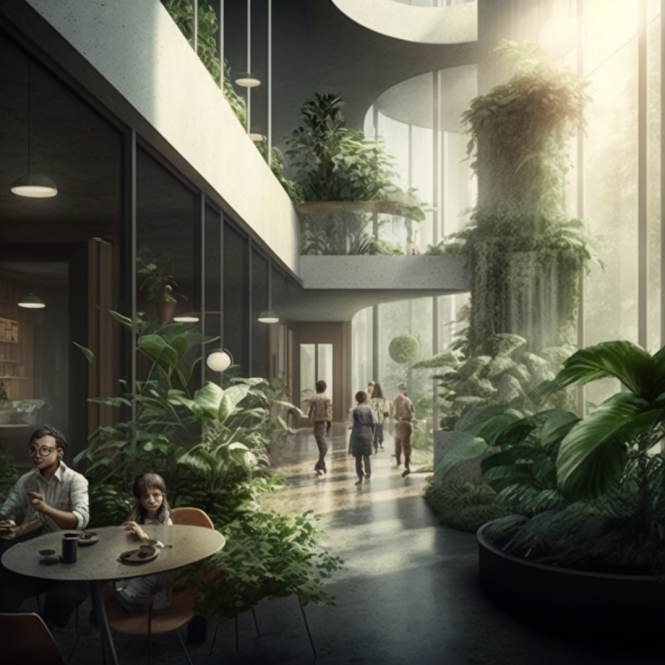

Biophilic design windows are more than just openings in a wall; they’re portals to the natural world, bringing the restorative power of nature indoors. Have you ever noticed how a simple view of trees or a bright sunny day can instantly lift your spirits? That’s the magic of biophilic design, which seeks to connect people with nature to improve their physical and mental health. Many struggle to create a truly calming and productive indoor environment, often feeling disconnected from the natural world. This article will show you how to strategically incorporate biophilic design elements through your windows, transforming your space into a tranquil oasis. We’ll explore various window types, maximizing natural light, incorporating indoor plants, and selecting the perfect window treatments to enhance the biophilic effect. Let’s get started!
Maximizing Natural Light with Biophilic Design Windows
The Importance of Daylight
Natural light is a cornerstone of biophilic design. Studies have shown a strong correlation between access to natural light and improved mood, productivity, and overall well-being. A well-lit space feels more open, spacious, and inviting, while a dimly lit room can feel cramped and depressing. Consider replacing small, inefficient windows with larger ones to maximize natural light penetration. Placement is key, strategically positioning windows to capture optimal sunlight throughout the day.
Choosing the Right Windows
The type of window you select greatly influences light transmission. Large, south-facing windows are ideal in many climates, providing ample sunlight during the day. However, consider the climate and orientation of your building to maximize solar gain. In warmer climates, energy-efficient windows with low-E coatings help to minimize heat gain, while in colder climates, double or triple-paned windows maximize insulation and maintain warmth. Consider using skylights to add another source of natural light.
Integrating Indoor Plants for a Biophilic Touch
Bringing the Outdoors In
Indoor plants are a simple yet effective way to add a touch of nature to your space. They improve air quality, add visual interest, and create a sense of calm. select low-maintenance plants that thrive in the specific light conditions of your room. Consider incorporating a variety of plants with varied textures, colors, and heights to create visual diversity and a more dynamic display. For example, placing a tall snake plant near a window can complement the natural light and create a visually appealing focal point.
Plant Placement Strategies
Place plants strategically to maximize their impact. Group similar plants together to create a visually cohesive display, or use plants to delineate varied areas within a room. Consider using hanging planters to add vertical interest and create a more lush environment. Regular maintenance, including watering and cleaning, is essential to maintain the health and vibrancy of your indoor plants.
selecting Appropriate Window Treatments for Biophilic Design
Balancing Light and Privacy
Window treatments play a crucial function in regulating natural light and providing privacy. select treatments that allow for flexible control over light levels. Sheer curtains, for example, filter light while maintaining a connection to the outside world. Roller blinds and cellular shades offer greater control over light transmission and offer insulation benefits. Consider using bamboo blinds or woven shades for a more natural and textured look.
Choosing Eco-Friendly Materials
Opt for sustainable and eco-friendly materials for your window treatments. Natural fabrics such as linen, cotton, or bamboo are excellent choices. Bamboo blinds are a particularly eco-friendly option, offering both durability and a natural aesthetic. Ensure your window treatments are designed to last, reducing waste and environmental impact. Consider the environmental impact of the manufacturing process and the overall longevity of the materials.
Enhancing Views and Connections to Nature
Framing Nature’s Beauty
If you are fortunate to have a stunning view, use your windows to frame it. Strategically place furniture to maximize the view, making it a focal point of the room. Avoid placing large pieces of furniture or clutter that obstructs the view. A well-placed window seat offers an ideal spot for enjoying the view and the natural light.
Maximizing Visual Connections
Even without a breathtaking view, you can still enhance the connection to nature. Consider using large windows with unobstructed views of your garden, courtyard, or trees. If you live in a dense urban environment, consider installing window films that simulate natural textures, such as wood grain or stone. This can help enhance the sense of calm and connection to nature.
Case Study: The Impact of Biophilic Design in Offices
Numerous studies have shown the positive effects of biophilic design in office environments. One study showed boostd productivity, improved employee well-being, and decreased stress levels in offices with abundant natural light and indoor plants. Employees reported feeling more energized, refreshed, and creatively inspired. Incorporating biophilic design in workplaces can create a more comfortable, productive, and engaging atmosphere for employees. Investing in biophilic design can have a significant return in terms of boostd productivity and improved employee satisfaction. The improved well-being of employees also reduces workplace absenteeism and boosts overall retention.
Incorporating biophilic design through windows offers numerous benefits, significantly improving indoor environments and occupant well-being. By thoughtfully selecting window types, maximizing natural light, and strategically placing greenery, you can create spaces that are both aesthetically pleasing and functionally restorative. Remember to consider the specific needs of your space and climate when making your selections. Start designing your biophilic haven today! Consult with an expert if needed to ensure proper implementation and maximize the impact of your biophilic design.